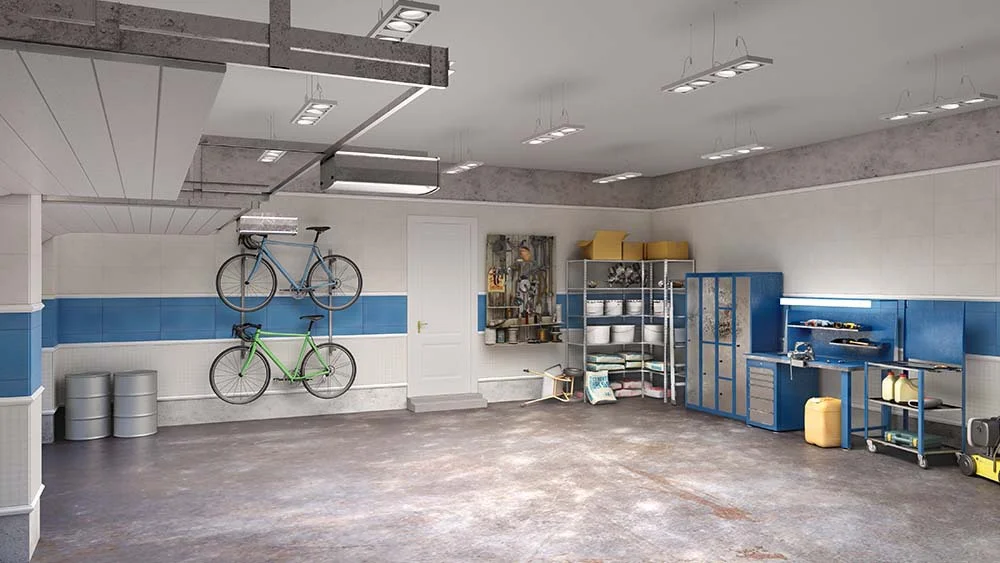
Key Takeaways
- Garages often become excessively hot due to factors like sun exposure, lack of insulation, and poor ventilation.
- Cooling your garage makes it more comfortable for activities like workouts or DIY projects.
- Mini-split, window, and portable units are the best air conditioner options for your garage.
If you spend time in the garage working on home improvement projects or fixing your vehicle, it’s no fun when your garage turns into a sauna and limits your activities. Even if it’s just for storage purposes, a climate-controlled garage is important to protect temperature-sensitive items.
Garages often suffer from extreme temperatures. In summer, they trap heat and feel like ovens. Since most garages aren’t connected to a central HVAC system, the solution lies in choosing the right type of air conditioner and preparing the space properly.
Whether you’re looking for a quick fix or a long-term cooling solution, this guide covers everything: types of garage air conditioners, sizing requirements, cost, and smart control options.
Why Is Your Garage Always Too Hot in Summer?
Here are the key reasons garages struggle with temperature extremes:
- No Insulation: Most garages have bare walls and ceilings with no insulation to trap cool air or block outside heat.
- Concrete Floors: Concrete absorbs and retains heat, raising temperatures during hot weather and making it feel icy cold in winter.
- Garage Doors: Large metal doors act as a barrier to absorb outdoor heat and transfer it inside.
- Lack of Ventilation: Without adequate air circulation, hot air accumulates in the garage, resulting in increased temperature.
Types of Garage Air Conditioners
Mini-split, window, and portable ACs are the top cooling options for your garage. Below, we have also incorporated some of the best garage air conditioner models for each of these types of AC units to help you maintain the ideal temperature.
Mini-Split AC for Garage
Mini-splits are among the best garage air conditioners due to their high efficiency. Ductless mini-splits are easy to install as they don’t have any ductwork. Mini-split heat pumps provide both heating and cooling and can be used all year round.
They are mounted high on the wall, which helps to preserve floor space in the garage. These ductless units have an indoor and an outdoor unit connected by a 3-inch hole in the wall. One indoor unit is usually sufficient for one car garage.
Top Mini-Splits for Your Garage
- Senville LETO Series Mini-Split
Senville Leto Series Mini-Split provides excellent energy efficiency, making it an affordable long-term solution for cooling and heating. It is available in sizes ranging from 9000 BTU to 24000 BTU to suit various garage sizes and cooling needs. This unit can be used as a garage air conditioner and heating unit in winter.
- MrCool DIY 36k BTU Mini-Split
MrCool DIY 36K BTU mini-split provides powerful cooling for larger garages, ensuring efficient performance. This garage AC unit comes with a 25ft quick-connect refrigerant line, making it easy to install without professional help.
If you need round-the-year cooling due to heat generated by vehicles, this mini-split air conditioner for the garage is an excellent option as it provides low ambient cooling down to 5°F.
Window Air Conditioner for Garage
Window air conditioners are one of the most affordable units, making air conditioning a breeze in your garage. Window ACs are the easiest to install when it comes to ductless units, and most window units come with comprehensive installation kits.
|
Pros |
Cons |
|
Affordable and widely available |
Noisy operation |
|
Easy DIY installation |
Blocks natural light and airflow |
|
Available in multiple sizes |
|
Best Window Air Conditioners For Garage
- Frigidaire Window-Mounted Room Air Conditioner, 8,000 BTU
This Frigidaire window unit is perfect for small to medium-sized garages, providing efficient cooling. You can customize AC on/off timings using the programmable timer. The remote-control option allows you to control temperature and fan speed from across the room.
Installation is simple with adjustable side panels that fit most windows. Washable air filters are convenient for garage use, where dust and fumes require more frequent cleaning.
- Midea 12,000 BTU Easy Cool Window Air Conditioner
The Midea Easy Cool window unit offers 12,000 BTUs of cooling power and is suitable for spaces up to 550 sq. ft. Easy to install and includes all necessary mounting accessories. LED display and remote control make it simple to adjust temperature and fan settings. Eco mode and the Easy Timer function help save energy by running the unit only when needed.
- LG Dual Inverter Smart Window Air Conditioner
This LG window AC features advanced inverter technology, which provides powerful cooling. It runs quietly at just 44 decibels on the lowest setting. It is Wi-Fi enabled and can be controlled via the LG ThinQ app.
When it comes to installation, it fits standard windows or can be framed into a wall, making it a great option for garages without window access.
Through-the-Wall Air Conditioners
A through-the-wall air conditioner works similarly to a window unit but differs in how it’s installed. Instead of fitting into a window, it requires cutting a hole in an exterior wall and installing a frame to support the unit.
These ACs are typically more energy-efficient than window units as they fit inside the wall quite well and do not leak much air. They also leave your window free, allowing natural light or fresh air to enter the room.
|
Pros |
Cons |
|
Energy efficient (less air leakage) |
Requires cutting a wall opening |
|
Free up window space |
|
Top Wall-Mounted Units
- Koldfront WTC8001W Through the Wall Air Conditioner
This Koldfront Wall AC provides cooling without blocking a window or taking up space. Includes an energy saver mode and tight wall installation to minimize air leaks. You’ll need to cut a hole in the wall and frame it, making it a more permanent solution.
-
LG Through-The-Wall Air Conditioner
This LG unit can cool down spaces up to 450 sq.ft. while maintaining efficiency. It comes with an installation kit and is compatible with a 115V outlet for hassle-free setup. It features an LED display and control panel, plus a remote for easy adjustments from anywhere in the room.
- Keystone Wall-Mounted Air Conditioner
Keystone through-the-wall AC is a versatile cooling solution for large garages up to 700 sq. ft.This unit offers both air conditioning and supplemental heating capabilities, making it suitable for year-round use. It also features a built-in dehumidifier function to reduce excess moisture in humid conditions. For added convenience, it comes with a remote control, allowing you to adjust settings from across the room.
Portable AC for Garage
A portable air conditioner is a compact, movable unit that cools and dehumidifies spaces, with some models offering heating and smart features.
If you cannot install a permanent AC in the garage, you can use a portable unit. You just have to exhaust its hose out of the window and plug it in to start the cooling process. You can also use this garage air conditioner if there are no windows by drilling a hole in the wall for the exhaust hose.
|
Pros |
Cons |
|
No permanent installation |
Noisy, especially in small spaces |
|
Easy to move between spaces |
Not energy efficient for large garages |
|
Needs an exhaust hose (through window or drilled hole in the wall) |
Top Portable AC Units
- Black+Dcker Portable Air Conditioner With Heat
This portable unit by Black+Decker offers a 14000 BTU cooling capacity. It also has a heating function, which makes it one of the best garage portable air conditioners for all-year comfort.
This garage portable air conditioner comes with rolling casters and side carrying handles, making it easy to move around. The installation process is also simple; you just have to put the exhaust hose out of the double-hung or sliding window. In case your garage lacks windows, try boring a hole in the wall for the exhaust hose.
- Coolblus 12,000 BTU Portable Air Conditioner
Coolblus 12k BTU portable AC cools spaces up to 550 sq. ft. effectively, making it ideal for small to medium-sized garages. You can easily control this AC using the front LED display and touch panel, or operate it from across the room using a remote control, which has a 33-foot range for added convenience. It comes with a window sealing kit for hassle-free installation.
- Whynter Dual-Hose Portable Air Conditioner
Whynter 14k BTU Dual-Hose portable AC can easily cool one or two-car garages, providing quick relief from the heat.
The unit features an activated carbon filter designed to help reduce unwanted smells and chemical fumes as it cools the space.
It works quietly at 56 dB, a perfect option if you are using your garage for work or pursuing hobbies like crafting. This portable AC comes with a thermostat for easy temperature control.
What to Consider When Choosing a Garage AC?
When determining the best way to cool your garage, the right air conditioner largely depends on the size of your space. Factors such as your budget, your energy efficiency requirements, and whether you want smart controls can all impact the decision.
1. Size
Narrow down your search for the best garage AC units by matching the AC’s BTU rating to your garage size. An air conditioning unit, be it of any type, can only cool/heat according to its size. British Thermal Unit (BTU) is a metric that can help you determine the correct AC sizing. BTU shows how much energy your AC unit uses to remove heat from a place within an hour.
For quick reference, a standard one-car garage measures around 150-250 sq. ft., and a two-car garage is 350-450 sq. ft. For a 150-250 sq. ft garage, 8000 BTU is needed to cool a garage; a window or portable unit will do the job. A two-car garage requires 10000-12000 BTU; window or ductless mini-splits work well here.
2. Budget
AC options range from affordable to premium. If you’re on a tight budget, go for a window or portable unit; both are easy to install and cost-effective. For a more permanent and mid-range option, through-the-wall ACs offer better performance. Mini-split systems cost more upfront but offer superior efficiency, quieter operation, and long-term energy savings.
3. Energy Efficiency
Energy efficiency is highly important when it comes to long-term savings. Seasonal Energy Efficiency Ratio (SEER) measures your AC performance over an entire cooling season, with most units falling between 13 and 21.
Energy Efficiency Ratio (EER) indicates how effectively a unit converts electricity into cooling. A 9 EER is considered above average, and 12 is deemed excellent. Mini-split systems offer the highest SEER ratings. You can also go for units that are ENERGY STAR Certified, as they have higher efficiency.
There’s also the Combined Energy Efficiency Ratio (CEER), which is a more comprehensive metric as it also takes into account the standby power usage.
4. Smart Controls

Garages aren’t typically climate-controlled all day, which makes smart control a game-changer. A smart thermostat for mini-splits, also known as a smart AC controller, can automate your garage climate. It can easily be paired with your mini-split, window, or portable AC. You can control your AC using your phone and make adjustments from anywhere. You can turn on your AC a short while before your work starts or set a schedule so it automatically turns on at your preferred time.
Your best choice to make any mini-split, window,
or portable AC smart. Enhance your comfort and savings.
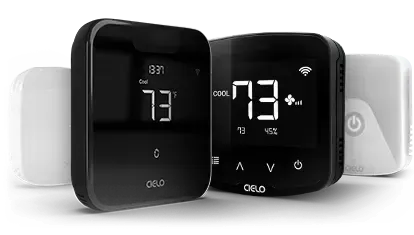
5. Noise Levels
Noise can be a concern, especially if your garage doubles as a home office or gym. Mini-split systems are the quietest, with indoor units producing very little sound. Window and portable ACs tend to be noisier and may not be ideal if you’re working or relaxing in the garage.
Which Cooling Systems Should You Avoid in a Garage?
Not all cooling systems are ideal for garage spaces. Two common types, central air conditioning systems and evaporative (swamp) coolers, may seem convenient but can actually result in various issues.
Central Air Conditioners in Garages
- The central air conditioner is designed to take a certain amount of load. Adding the extra burden on it will overtax the unit and can result in different problems.
- Cause pressure imbalance—most garages lack return ducts, leading to depressurization in your home. This pulls in unfiltered outdoor air, introducing dust, allergens, and pollutants.
- Spread harmful fumes—gasoline, paint, or car exhaust fumes (including carbon monoxide) can backflow into your living space through shared ducts.
- Violate building codes in many areas, as extending ductwork into garages poses health and safety risks.
Evaporative (Swamp) Coolers in Garages
Evaporative coolers add moisture to the air, making them less effective in humid climates. In garages, they can:
- Increase humidity levels, especially in enclosed spaces.
- Lead to mold and mildew growth, which can damage your tools, walls, and insulation.
- Provide inefficient cooling in areas with poor airflow or no exhaust outlet.
Benefits Of Garage Air Conditioning
Let’s explore the key benefits of having AC in the garage:
- Air conditioning can help you stay comfortable and enjoy your time in the garage without worrying about temperature fluctuations.
- If your garage is connected to your home, hot air can easily seep through the shared wall, door, or window. An air-conditioned and insulated garage can help to keep your surrounding home area cooler. It creates a pocket that prevents the penetration of outside heat into your home.
- When excess heat isn’t getting absorbed in your home, the central air conditioner does not have to work hard, ultimately lowering energy bills.
- Excessive heat and humidity in the garage can affect your storage stuff, such as paints, electronic items, or furniture pieces. Garage air conditioners can help remove moisture from the air and protect your sensitive items.
Final Thoughts
A garage air conditioner is the most effective way to lower the temperature, regardless of whether you use the space for leisure activities or work purposes. If you have a small garage, a window, or a portable unit can keep the environment comfortable. If you want a more efficient system, consider opting for a mini-split AC in the garage. With any of these garage air conditioning options, make sure that your garage is properly insulated to prevent loss of cool air. To take the garage climate control to the next level, a smart AC controller paired with your garage AC unit is a perfect solution.
Frequently Asked Questions
How Can I Make My Garage AC Unit More Efficient?
Improve garage insulation and ventilation. Add insulation to the ceiling, sun-facing walls, windows, and garage door to keep cool air in and hot air out. Use reflective coverings and weatherstripping on windows, and consider an insulated garage door. For ventilation, open windows in the evening, use roof vents, or install exhaust fans to remove hot air and fumes.
What Type of Air Conditioner Is Best for a Small Garage With No Windows?
You can go for a through-the-wall air conditioner for a more permanent solution, or go with a portable unit if you are looking for a temporary setup.
What’s the Best AC for a 2-Car Garage?
A mini-split AC is often the best option for a 2-car garage due to its high efficiency. However, you can also use window, through-the-wall, and portable units.
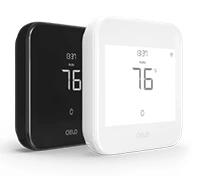



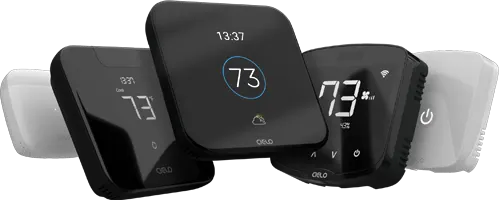

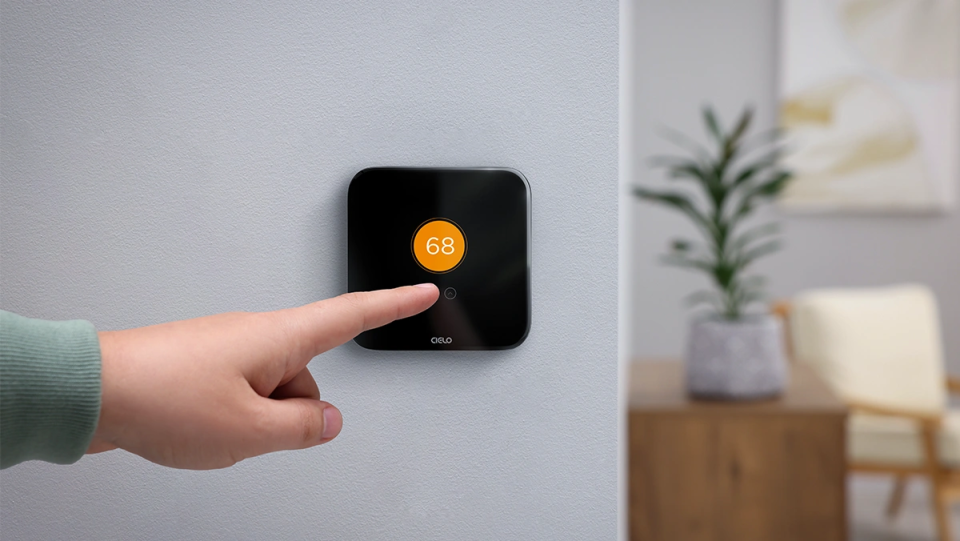


1 Comment. Leave new
Know that a properly maintained system can maximize the lifespan of the HVAC system